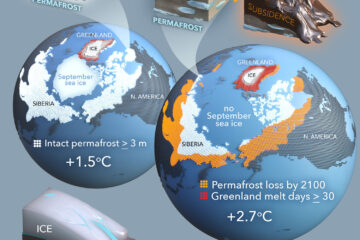Climate and vegetation structure shape ant communities along elevational gradients on the Colorado Plateau
Terrestrial animal communities are largely shaped by vegetation and climate. With climate also shaping vegetation, can we attribute animal patterns solely to climate? Our study observes ant community changes along climatic gradients (i.e., elevational gradients) within different habitat types (i.e., open and forest) on the Colorado Plateau in the southwestern United States. We sampled ants and vegetation along two elevational gradients spanning 1,132 m with average annual temperature and precipitation differences of 5.7°C and 645mm, respectively. We used regression analyses and structural equation modeling to compare the explanatory powers and effect sizes of climate and vegetation variables on ants. Climate variables had the strongest correlations and the largest effect sizes on ant communities, while vegetation composition, richness, and primary productivity had relatively small effects. Precipitation was the strongest predictor for most ant community metrics. Ant richness and abundance had a negative relationship with precipitation in forested habitats, and positive in open habitats. Our results show strong direct climate effects on ants with little or no effects of vegetation composition or primary productivity, but contrasting patterns between vegetation type (i.e., forested vs. open) with precipitation. This indicates vegetation structure can modulate climate responses of ant communities. Our study demonstrates climate-animal relationships may vary among vegetation types which can impact both findings from elevational studies and how communities will react to changes in climate.


